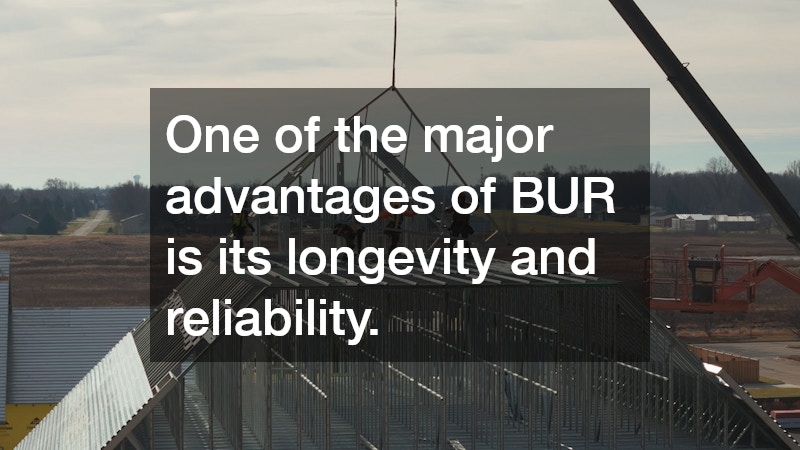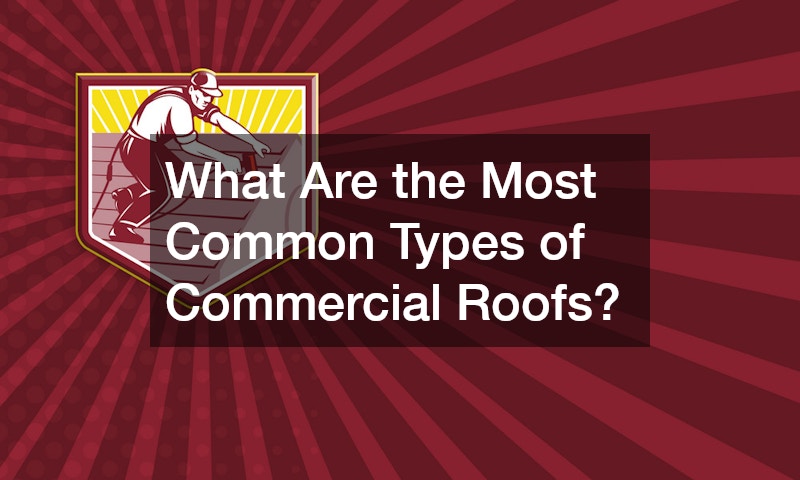Choosing the right roof for a commercial building is a significant decision that can affect both aesthetics and functionality. A local commercial roofing contractor can provide insight into the best options available, taking into account factors like climate, budget, and building requirements. In this article, we explore the most common types of commercial roofs, highlighting their characteristics, benefits, and potential limitations.
1. Built-Up Roofing (BUR)
Built-up roofing, often abbreviated as BUR, has been a traditional choice for many commercial buildings. It consists of multiple layers of bitumen alternated with reinforcing fabrics, creating a durable and thick membrane. This type of roofing is known for its excellent waterproofing properties and ability to withstand harsh weather conditions. The layers are typically bonded together with heated or cold-applied asphalt, providing a continuous, sealed surface. The process often involves gravel or a cap sheet as a top layer to protect against external elements.
One of the major advantages of BUR is its longevity and reliability. It’s a time-tested roofing solution that many local commercial roofing contractors recommend for flat or low-slope roofs. The multiple layers in BUR not only offer superior protection but also contribute to its insulating qualities. Additionally, its stone or gravel surface layer provides excellent UV protection, enhancing its durability. Despite being a reliable option, BUR can be heavier than other alternatives, which may require additional structural support.
However, installing BUR can be labor-intensive, leading to higher upfront costs. The complexity of the installation process might necessitate skilled professionals, which is why hiring a knowledgeable local commercial roofing contractor is essential. Once installed, maintenance of a BUR roof is relatively straightforward, involving regular inspections and timely repairs. Its robust design can handle foot traffic, making it an excellent choice for buildings that require regular rooftop access. Ultimately, BUR remains a popular roofing option for commercial buildings due to its proven durability and comprehensive protection capabilities.
2. Metal Roofing
Metal roofing is another widely used option for commercial buildings, known for its durability and longevity. It is typically made from materials like aluminum, steel, or copper, offering excellent resistance to weather-related damage. Metal panels can be installed on various types of roofs, making them versatile. They are often coated with protective layers to enhance their aesthetic appeal and resist rust and corrosion. Due to its reflective properties, metal roofing can significantly contribute to energy efficiency by reducing cooling costs.
Local commercial roofing contractors often recommend metal roofing for its minimal maintenance requirements. Unlike other materials, metal roofing does not rot or suffer from insect damage, providing a long-lasting solution for commercial buildings. This type of roofing is adaptable to various architectural styles, offering sleek and modern looks. One of its standout features is the ability to withstand extreme weather conditions, including high winds and heavy snowfall, while maintaining structural integrity. Although the initial cost of metal roofing can be higher, the long-term savings on maintenance and energy make it a cost-effective choice.
Despite its advantages, there are some considerations to keep in mind. The noise generated by rainfall or hail can be more pronounced with metal roofing, although this can be mitigated by additional insulation. It is also essential to ensure proper installation, as poor sealing can lead to water intrusion. Collaborating with an experienced local commercial roofing contractor can help avoid such issues. Overall, metal roofing offers a blend of durability, aesthetics, and energy efficiency, making it a preferred option for many commercial properties.
3. Modified Bitumen Roofing
Modified bitumen roofing is a popular choice for commercial buildings, particularly those with flat roof structures. It consists of bitumen and reinforcing fabrics, chemically modified to increase elasticity and durability. This roofing type is typically installed in a single or multi-ply system, adhered to the roof deck. The modified polymers provide enhanced resistance to temperature fluctuations and improve waterproofing capabilities. Additionally, its compatibility with a variety of building types makes it a versatile option.
Local commercial roofing contractors favor modified bitumen for its ease of installation and repair. This roofing system allows for quick and clean installations, often without the need for heavy equipment. Its flexibility makes it resistant to cracking during expansion and contraction caused by temperature changes. The smooth surface of modified bitumen roofs also simplifies maintenance, as debris can be easily removed. This roofing type is often finished with a reflective coating to increase energy efficiency and extend its lifespan.
However, while modified bitumen offers several benefits, it is not without potential drawbacks. Its performance can vary based on the quality of materials used, so selecting a reputable provider is crucial. The seams require proper sealing to ensure water-tightness, underscoring the importance of skilled installation. A trusted local commercial roofing contractor can provide the necessary expertise to maximize the benefits of this roofing system. Overall, modified bitumen remains a dependable choice for commercial roofing due to its resilience and ease of maintenance.
4. Single-Ply Membrane Roofing
Single-ply membrane roofing has grown in popularity for commercial applications, thanks to its modern materials and straightforward installation. This roofing system involves a single layer of thermoset or thermoplastic material, offering excellent flexibility and durability. Commonly used materials include TPO, PVC, and EPDM, each with unique properties catering to specific needs. Single-ply membranes provide excellent resistance to UV radiation, chemicals, and punctures, making them suitable for various environments. The membrane is typically held in place using a combination of fasteners, adhesives, or ballast.
Many local commercial roofing contractors recommend single-ply membrane roofing due to its durability and installation efficiency. These membranes can often be installed over existing layers, reducing the need for extensive tear-off processes. The lightweight nature of single-ply materials reduces the strain on building structures, contributing to overall stability. Additionally, their reflective surfaces aid in reducing energy consumption, aligning with sustainable building practices. With proper installation, single-ply membrane roofing can offer an extended lifespan, minimizing the need for frequent replacements.
Despite its advantages, proper installation is crucial to prevent leaks and maximize lifespan. The seams, in particular, require careful attention to ensure they are adequately sealed, preventing potential water intrusion. Engaging a skilled local commercial roofing contractor is essential to achieve a high-quality installation. While single-ply systems may come with a higher upfront cost compared to traditional options, their benefits in maintenance savings and energy efficiency often justify the investment. As commercial buildings continue to evolve, single-ply membrane roofing remains a formidable choice for effective and modern roof protection.
When determining the ideal roofing solution for a commercial building, understanding the benefits and limitations of various materials is key. From the traditional durability of BUR, the efficiency of metal, the versatility of modified bitumen, to the modern appeal of single-ply membranes, each roofing type offers unique advantages. Consulting with a knowledgeable local commercial roofing contractor will ensure that the investment meets the building’s specific needs and local climate conditions. With proper installation and maintenance, these common roofing types can provide lasting protection and efficiency for commercial properties. As technology and materials continue to advance, commercial roofing options will undoubtedly evolve, offering even more sustainable and resilient solutions for the future.



